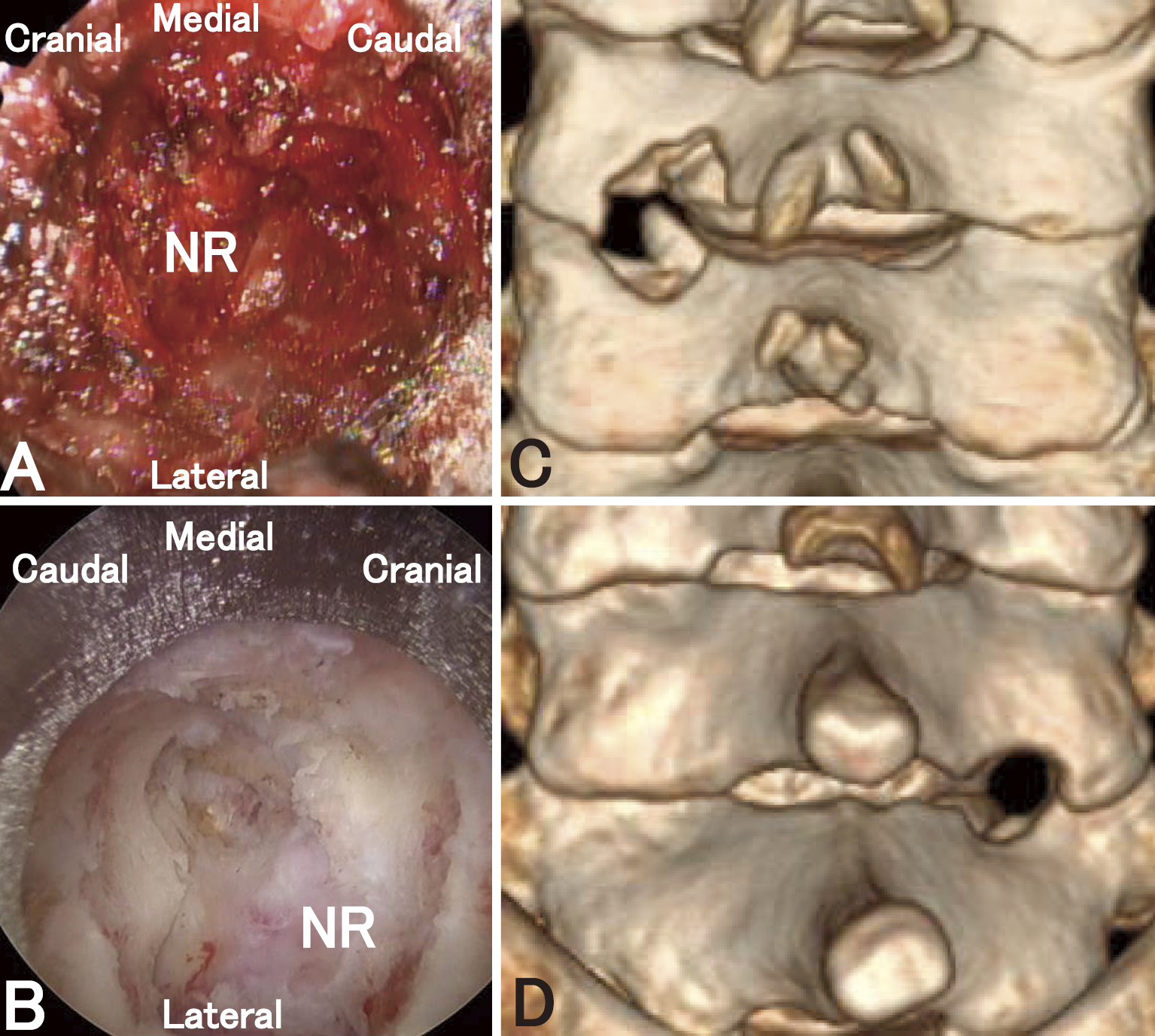- 著者
- Blumstein GIDEON Kento TAKEBAYASHI Takahiro INUI Yasushi OSHIMA Hiroki IWAI Hirohiko INANAMI Hisashi KOGA
- 出版者
- The Japan Neurosurgical Society
- 雑誌
- Neurologia medico-chirurgica (ISSN:04708105)
- 巻号頁・発行日
- pp.2023-0073, (Released:2023-07-10)
- 参考文献数
- 21
- 被引用文献数
- 1
This study aimed to compare the outcomes of microendoscopic cervical foraminotomy (MECF) versus full-endoscopic cervical foraminotomy (FECF) for treating cervical radiculopathy (CR).A retrospective study was performed on patients with CR treated using MECF (n = 35) or FECF (n = 89). A 16-mm tubular retractor and endoscope was used for MECF, while a 4.1-mm working channel endoscope was used for FECF. Patient background and operative data were collected. The numerical rating scale (NRS) and the Neck Disability Index scores were recorded preoperatively and at 1 year postoperatively. Postoperative subjective satisfaction was also assessed.Although the NRS, and NDI scores, as well as postoperative satisfaction at 1 year considerably improved in both groups, one of the background data (number of operated vertebral level) was significantly different. Therefore, we separately analyzed single- and two-level CR. In single-level CR, operation time, intraoperative bleeding, postoperative stay, NDI after 1 year, and reoperation rate were statistically superior in FECF group. In two-level CR, the postoperative stay was statistically superior in FECF group. Three postoperative hematomas were observed in the MECF group, while none was observed in the FECF group.Operative outcomes did not significantly differ between groups. We did not observe postoperative hematoma in FECF even without placement of a postoperative drain. Therefore, we recommend FECF as the first option for the treatment of CR as it has a better safety profile and is minimally invasive.
- 著者
- Kento TAKEBAYASHI Yasushi OSHIMA Muneyoshi FUJITA Takahiro INUI Hiroki IWAI Hirohiko INANAMI Hisashi KOGA
- 出版者
- The Japan Neurosurgical Society
- 雑誌
- Neurologia medico-chirurgica (ISSN:04708105)
- 巻号頁・発行日
- pp.2022-0357, (Released:2023-05-11)
- 参考文献数
- 28
- 被引用文献数
- 2
This study aims to compare the outcomes of interlaminar and transforaminal approaches for full-endoscopic discectomy (FED) for treating L4/5 lumbar disc herniation (LDH).A retrospective study of patients with L4/5 LDH treated with interlaminar endoscopic lumbar discectomy (IELD, n = 19) or transforaminal endoscopic lumbar discectomy (TELD, n = 105) was conducted. Patient background, radiological findings, and operative data were collected. Oswestry Disability Index (ODI) and European Quality of Life-5 Dimension (EQ-5D) scores were recorded preoperatively and 1 and 2 years postoperatively.Although ODI and EQ-5D scores 1 and 2 years postoperatively improved statistically in the IELD and TELD groups, there were no statistical differences between the groups. IELD was predominantly performed in patients who were taller and heavier. The mean operative times and the frequency of laminectomy for IELD and TELD were 67.2 and 44.6 min and 63.2 and 17.1%, respectively (P < 0.001). The radiological findings showed that the concave configuration of the L4 lamina, interlaminar space width, and foraminal width were statistically different between the groups. There were no complications in either of the groups. Reoperation was required for recurrence in two and five patients in the IELD and TELD groups (P = 0.29), respectively.Operative outcomes were identical between the two groups. Although the operative time was longer in the IELD group, both approaches were safely and effectively performed. Depending on the patient's physique and preoperative radiological findings, the more suitable approach for L4/5 LDH should be chosen.

